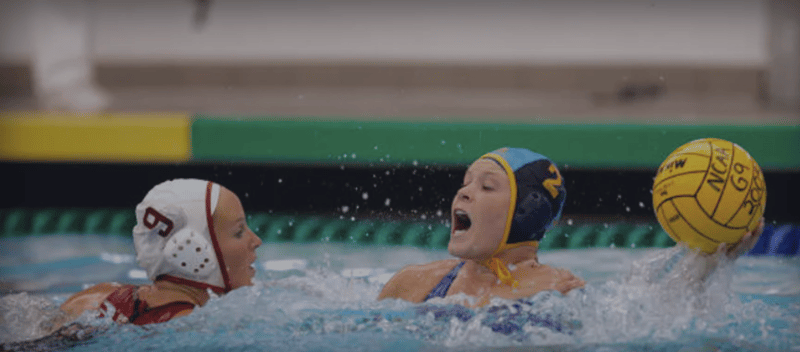
Williams, Cameron & VanNess, Mark & Rossi, Joey & Mayberry, John & Jensen, Courtney. (2019). Lower Limb Kinematic Assessment to Predict Water Polo Performance. Medicine & Science in Sports & Exercise. 51(6S): 949. DOI: 10.1249/01.mss.0000563346.93029.e1.
Presented at the American College of Sports Medicine Annual Meeting (ACSM) 2019.
“These findings indicate that both vertical jump and force plate biosequencing data may be useful predictors of water polo performance and could be employed to identify athlete capacities that need improvement. “
Population: 14 Division I Women’s water polo players were evaluated during two consecutive seasons
The questions covered:
Water polo requires leg muscle biosequencing that is different from weight bearing sports. The kinematics and forcefulness for each player could be optimized for different positions and help predict player success. Comparing vertical jump with kinematic biosequencing, and comparing each with athletic performance, may enhance training assessments.
Load predicted a lower shooting percentage (β = -0.003, p = 0.001), more exclusions (β = 0.284, p < 0.001), and more exclusions drawn (β = 0.219, p = 0.002). Explode predicted a higher shooting percentage (β = 0.003, p = 0.009), more steals (β = 0.642, p < 0.001), and fewer exclusions (β = -0.454, p < 0.001). Drive predicted a higher shooting percentage (β = 0.002, p < 0.001), fewer assists (β = -0.221, p = 0.007), fewer exclusions (β = -0.099, p = 0.017), and more exclusions drawn (β = 0.107, p = 0.017). Vertical Jump Height predicted a higher shooting percentage (β = 0.010, p < 0.001), more steals (β = 0.820, p = 0.043), fewer assists (β = -1.324, p = 0.005), and fewer exclusions (β = -1.466, p < 0.001).
These findings indicate that both vertical jump and force plate biosequencing data may be useful predictors of water polo performance and could be employed to identify athletic capacities that need improvement.